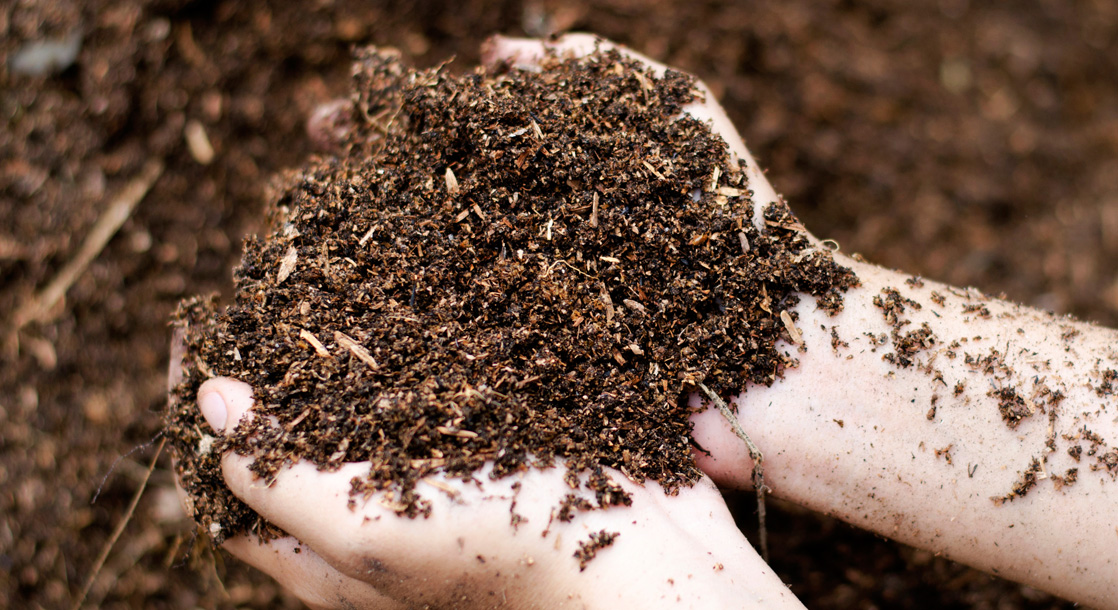I’ve worked with three of Portland’s top dispensaries, and one thing is certain — craft cannabis gets people excited here in Oregon. An important part of the movement is Living Soil, sometimes referred to as true living organics or no-till. All the reputable growers are using it. All the best dispensaries are carrying it. The most discerning connoisseurs are requesting it. And, the most delicious weed grows in it. People want the heady shit. Well, this is as heady as it gets: All-natural, synthetic-free, living, breathing cannabis cultivation at its finest. In fact, it’s my favorite kind to toke. I thought it wise to reach out to master grower at CAPTL, E.J. Ecolango, for an exclusive look at the what, why, and…how can I make this dank shit, too?
What Is It?
Visualize bacteria, fungi, protozoa, nematodes, arthropods, and earthworms breaking down organic matter to make nutrients available for plant roots. It’s all about diversity. The cycles are symbiotic, bio-dynamic exchanges of energy. Make a batch of soil, and keep it alive. And like whiskey, it gets better with age. As E.J. always says, “An ancient forest is a healthy forest.”
All of the phrases to describe the process of Living Soil are relatively modern. However, these ideas are anything but new. The concept encapsulates nature in its truest form: a microcosm of cooperative organisms forming an elaborate soil food web of which, the processes are complex and many, resulting in the maximum genetic potential of every plant grown within a perfectly designed system.
“Technically speaking, Living Soil should not only translate to exclusively growing cannabis, rather it’s how all plants began growing, developing, and evolving in nature; and to myself and many others, it’s the only way of cultivation. Embracing these powerful organic forces is the pinnacle of horticulture and plant husbandry,” acknowledges E.J.
Why Do I Care?
Because you are what you blaze. Conventional soil is made up of low-quality ingredients, primarily peat, wood chips, and whatever else they want to throw in there. And generally, it’s not biologically active. In fact, most of the time, it’s fortified with synthetic salt-based nutrients. Even high quality horticultural soil is usually stored outdoors where it collects pests and/or it’s sterilized by high heat.
And just like your diet, you want to consume what’s vibrant, happy, and healthful.
How Do I Make It From Scratch?
Create this primordial canna-meal by using a masterful blend of art, science, and love. E.J. was kind enough to share his technique for building soil from scratch:
-
30% Sphagnum peat moss or homemade leaf mold – Collect leaf litter for this step.
-
30% Homemade or premium worm castings – Compost will suffice, but it needs to be high quality.
-
25% Buckwheat hulls or small lava rock – Use some form of aeration amendment or perlite.
-
15% Topsoil – This will make it a real soil, and adds clays that will increase cation-exchange, adding a diverse amount of materials to the mix (EJ likes to take a shovel and get some soil from a nice spot on his property) or just straight 33/33/33—Peat/Compost/Aeration without the topsoil—bales of sphagnum peat moss are available at stores like Home Depot.
-
Neem seed meal – ½ cup per cubic foot
-
Kelp meal – ½ cup per cubic foot
-
Crab/shrimp meal – ½ cup per cubic foot
-
Mineral mix – 4 to 5 cups per cubic foot
-
Comfrey leaf – Use a handful top-dressed and then cover with worm castings
-
Oyster Shell – 1/2 cup per cubic foot
-
Bio Char – 1 cup per cubic foot
Once you’ve mixed it all up in a container, mulch with straw or use a living mulch like clover. You only need good-quality, fresh compost and/or worm castings, a few good soil amendments covering the N-P-K (Nitrogen-Phosphorus-Potassium) ratio range (it varies from 1.5-.5-1 to 3.5-1-2), and a complete lineup of minerals and micronutrients. The most important part is keeping the soil alive and full of microbes that process added minerals and nutrients quickly enough to keep up with plant growth. This is where brewing compost tea plays a key part. Rich in microorganisms (bacteria, fungi, etc), compost teas are extremely beneficial to your plants' health and growth.
What About Pests?
Make a crucial preventative IPM (Integrated Pest Management) spray, using neem/karanja meal. Do your homework and design a system that works best for you.
Where Can I Learn More?
Teaming with Microbes by Jeff Lowenfels and Wayne Lewis
One Straw Revolution by Masanobu Fukuoka
Permaculture: A Designers’ Manual by Bill Mollison
Research everything, observe your plants, listen to them, engage in discussions with fellow gardeners, keep microbial life alive and happy, avoid ph swings when adding too much of any one thing (whether it's acidic or alkaline), become proficient at brewing a couple of different compost teas, and last but not least, don't forget to mulch! May your garden flourish.











